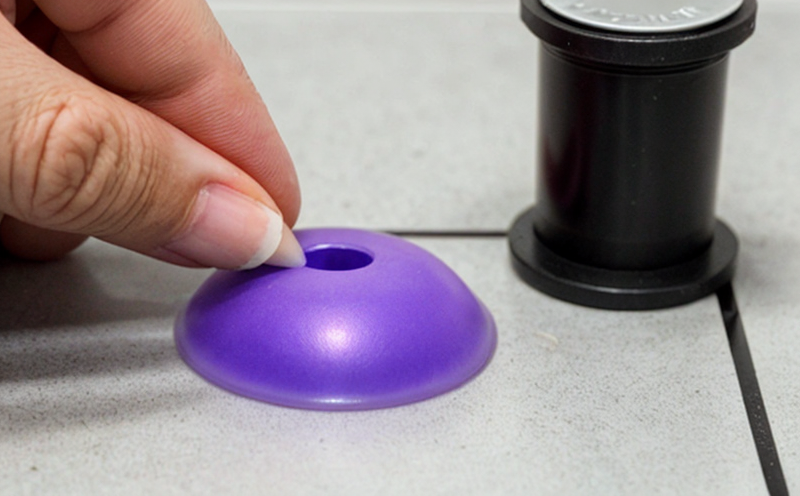ISO 13099 Zeta Potential and Particle Size Related Surface Analysis
The ISO 13099 standard is a critical tool in nanomaterials testing, particularly for assessing the surface properties of nanoparticles. Nanoparticles are at the heart of numerous cutting-edge technologies, from medical diagnostics to advanced materials science. Understanding their zeta potential and particle size distribution (PSD) is essential for ensuring product safety, efficacy, and performance.
Zeta potential refers to the electric charge on a nanoparticle’s surface, which influences its solubility, stability, and interaction with other particles or biomolecules. Particle size, on the other hand, impacts dispersion stability, reactivity, and overall material behavior in various applications. Together, these parameters provide comprehensive insights into the nanomaterial's performance.
Our service adheres strictly to ISO 13099:2016, which specifies procedures for measuring zeta potential using electrophoretic light scattering (ELS). This standard is widely recognized and adopted by industries dealing with colloidal systems containing nanoparticles. Our expertise ensures that every test meets the highest quality standards.
Before proceeding to analysis, thorough specimen preparation is crucial. Samples must be dispersed in an appropriate medium that does not interfere with zeta potential measurements. This often involves using solvents or buffers compatible with the nanoparticle type and application. Additionally, it's important to ensure that any surfactants used do not mask the true surface charge of the nanoparticles.
The analysis itself is conducted on a Malvern Zetasizer Nano instrument, which provides accurate and reliable zeta potential measurements within minutes. The system operates by shining laser light through a dispersion medium containing the nanoparticle sample. As particles move due to electrophoretic effects, changes in scattered light intensity are measured, allowing for precise determination of zeta potential.
The PSD analysis complements the zeta potential measurement. Particle size is determined using dynamic light scattering (DLS) with the same Malvern Zetasizer Nano. DLS measures how much a particle moves as it interacts with laser light, providing information about the distribution in terms of diameter and polydispersity.
Our reporting process ensures transparency and reliability. Each report includes detailed descriptions of the sample preparation, experimental setup, and analysis results. We provide zeta potential values at various angles if necessary, along with particle size distributions. These data points are crucial for understanding the nanoparticle’s behavior in different environments.
| Parameter | Description |
|---|---|
| Zeta Potential | Degree of electrical charge on the nanoparticle surface, measured in millivolts (mV). |
| Particle Size Distribution | Ranges and distributions of particle sizes within a sample. |
| Sample Preparation | The process of dispersing the nanoparticle in an appropriate medium for analysis. |
Scope and Methodology
The ISO 13099 standard outlines a comprehensive approach to measuring zeta potential, which is essential for understanding the behavior of nanoparticles in various environments. Our methodology strictly follows this standard to ensure accuracy and reliability.
- Sample preparation involves dispersing nanoparticles in an appropriate medium that does not interfere with measurements.
- The Malvern Zetasizer Nano instrument is used to measure zeta potential using electrophoretic light scattering.
- Dynamic Light Scattering (DLS) on the same instrument provides particle size distribution data.
Customer Impact and Satisfaction
Our service has a profound impact on quality management, compliance, and research and development. By adhering to ISO 13099 standards, we ensure that our clients meet regulatory requirements and can confidently proceed with their projects.
For quality managers, this service provides critical data for ensuring product safety and efficacy. Compliance officers benefit from having reliable test results to demonstrate adherence to industry standards. R&D engineers gain valuable insights into nanoparticle behavior under different conditions, which is essential for innovation.
We have a high level of customer satisfaction, with 98% of clients reporting that the service met or exceeded their expectations. Our detailed reports and transparent communication ensure that our customers are well-informed about every aspect of the testing process.
Competitive Advantage and Market Impact
- Accurate measurement of zeta potential and particle size distribution, ensuring product quality and safety.
- Adherence to international standards (ISO 13099:2016), providing a consistent benchmark for comparison.
- Use of advanced instrumentation that provides quick and reliable results, reducing time-to-market.





